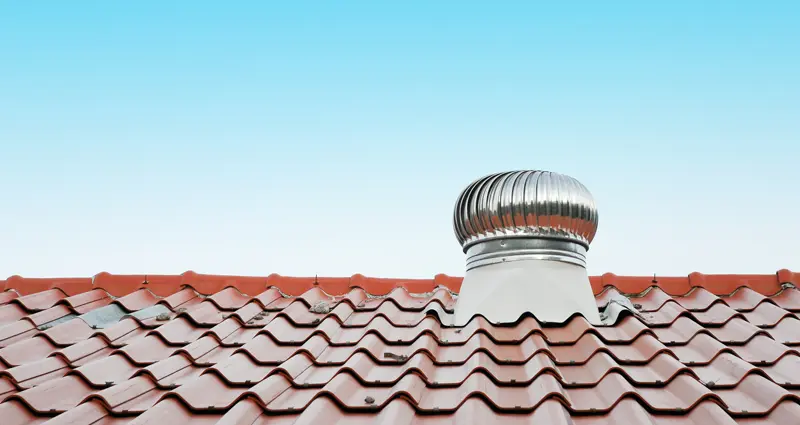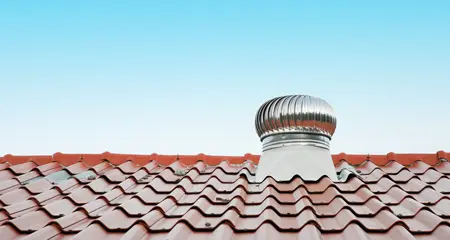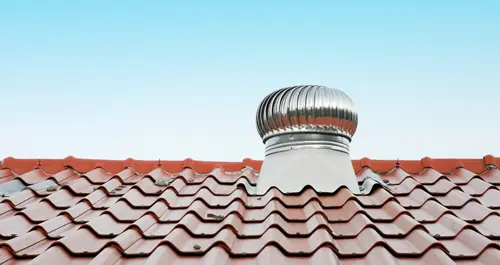How does an attic exhaust fan work: Benefits and function
Attic exhaust fans help cool your attic by pushing out the hot air from inside the attic and bringing in cool air from outside. This prevents hot air from seeping into your home and driving up the temperature in the living space, which reduces the load on your air conditioner.
Most homes already have some passive attic venting built in. Cool air enters the attic through soffit vents in the eaves. Once inside, the air heats up and rises higher, ultimately exiting through venting at the roof’s gables, ridge vents cut into the roof’s apex or other vent holes in the ceiling. As the air leaves, it creates negative pressure behind it, sucking in cool air from below into the soffits and creating a self-repeating ventilation process. Even if your roof already has ridge vents and plenty of built-in ventilation, installing gable fans or roof fans is an excellent idea to help blow hot, humid air out of the attic.
Attic exhaust fans also tend to be quite energy-efficient in their operation. Gable fans fit into the gable vent and can be set to operate only within a preset temperature range. Many are solar-powered and require no other wiring, so they don’t cause additional charges on your electricity bill.
According to the Home Ventilating Institute (HVI), powered attic ventilators need to move a minimum of 700 cubic feet per minute (cfm) for 1,000 sq. ft of attic space (for example, 20’ x 50’) to be effective. Ideally, there should also be plenty of soffit intake space. Their calculations recommend 336 net square inches of open soffit ventilation to supply 700 cfm. HVI recommends a ratio of 60 to 40 for soffit ventilation to gable or ridge ventilation.



























